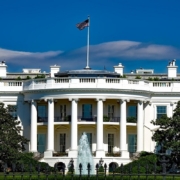Is Montenegro offering a way forward for the Western Balkans?
In late September Montenegro’s government announced an ambitious reform programme Evropa sad! (Europe Now!). Montenegro has taken radical economic policy steps in the past, unilaterally introducing the euro in 1998, eight years before independence as well as introducing a flat income tax in 2007 at 15% which was progressively reduced to 9% by 2010. But this reform programme has the potential to leave a deeper trace.
No more health care contributions
The main elements of the reform are:
- abolishing health care contributions;
- halving the amount of tax taken out of gross wages (the tax wedge);
- increasing the minimum wage by 80% to 450 euros a month.
There is no tax-free threshold in Montenegro currently, so that while the income tax rate is 9%, the tax wedge is high. That is why the government plans to introduce a tax-free threshold of 700 euros on gross monthly earnings. Gross earnings between 700-1,000 would be taxed at 9%, while above 1,000 euros a 15% income tax rate would apply.
These changes should mean the cost of labour remains the same for employers, while all employees can look forward to higher net earnings. If the reform works as planned, employees will no longer be receiving a part of their salaries “under the table”. Banks would be able to extend more loans to households as a result. Higher spending would support VAT revenues to help fund the reform programme.
Dealing with the grey economy and labour shortages
The decision to abolish health care contributions has aroused most interest. This is a policy direction no one has chosen in the region. It amounts to the government admitting it is not collecting anywhere near enough revenue from the current system. In my opinion, the main impact is the realisation health care could also be funded from taxes. Which is to say without directly increasing the cost of labour.
This is no small matter as every country in the region is for the first time in their economic histories experiencing shortages of labour rather than shortages of jobs. Boosting take home pay without excessively burdening employers is one way to attract labour.
Impact on the budget
Clearly, abolishing health care contributions and raising minimum wages is not costless to the budget. The government estimates the cost will be EUR137.7mn in 2022 (7.3% of 2019 revenues). That is why it is introducing new taxes on assets which cannot be accounted for by earnings, increasing tobacco and alcohol excise taxes (which need to anyhow occur to meet EU minimum levels) and introducing progressive taxation of income and profits, amongst other changes. How much revenue can be made up through all these changes will depend on the administrative capacity of the tax office and customs service.
Given revenues are a function of economic activity it will be fascinating to watch in 2022 and beyond how this reform fares. One thing is however clear. Should Montenegro succeed in financing its health sector through tax revenues alone, the rest of the Western Balkans (and beyond) will have something to think about seriously. Especially in the context of boosting participation rates in the labour force.
This is where the government’s intention to increase public sector salaries 17.5% and 30% for doctors and nurses through this reform programme makes it doubly interesting. Competing for labour against that type of competition will be tough for the private sector. Even though the reform seeks to keep overall labour costs roughly the same as this year. After all, when take home pay goes up in the public sector, that makes it more difficult for the private sector to attract labour. But then again, this is the first era in the region where there is a shortage of labour, so employers will have to pay up. The real question will be, can they afford to? In other words, can they generate the revenues to finance any increased cost of labour arising from competition for labour?
A way forward for the Western Balkans?
Montenegro may be the smallest economy in the region and therefore specific. The country is characterised by a narrow industrial base and very large tourism sector. Yet, the Kosovo and North Macedonia economies and even Bosnia Herzegovina are not that much larger to have no common ground. Together, they represent four of the six Western Balkans nations. Montenegro can influence the Western Balkans.
The point I am making with this line of argument is the following: as much as I would like to see Albania and North Macedonia begin EU accession talks today, I do not agree with the widely repeated argument that the EU has not done enough to attract the Western Balkans.
Ability to implement challenging reforms
Joining the EU means accepting the rules of the club. This is a complex, politically fraught endeavour. All new member states needed to make reforms today. For the promise of a return on those reforms at some time in the future, well after the term of the government of the day ended.
The starting position of the Western Balkans is meaningfully worse than was the case with any current EU member state. That is why it is logical to expect a longer and more difficult path to membership of the EU. Fundamentally, though, the logic of accession remains meeting the criteria set by the EU, by individual candidate countries. If anything, the more difficult thing for the EU to do is to accept that one or more countries may not want to join the EU. That is a perfectly legitimate approach too, much as it is difficult to admit.
Should the Evropa sad! programme succeed, it will have dealt with one of the more challenging aspects of joining the EU for Montenegro: the grey economy. It will have demonstrated that a candidate country can implement fundamentally significant reforms. That is why the programme has the potential to act as a way forward for the Western Balkans.
That is why I will be watching the fate of the programme and its implementation with interest in coming years.





